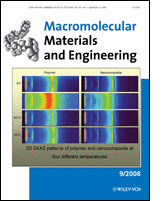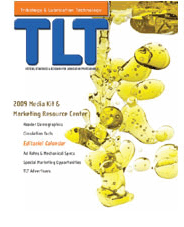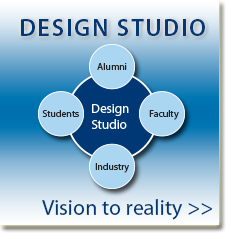 Invited Chapter: “Polytetrafluoroethylene Matrix Nanocomposites for Tribological Applications” D.L. Burris, K. Santos, S.L. Lewis, X. Liu, S.S. Perry, T.A. Blanchet, L.S. Schadler, & W.G. Sawyer, Tribology of Polymeric Nanocomposites, editor: Klaus Friedrich and Alois K. Schlarb pp. 403-438
Invited Chapter: “Polytetrafluoroethylene Matrix Nanocomposites for Tribological Applications” D.L. Burris, K. Santos, S.L. Lewis, X. Liu, S.S. Perry, T.A. Blanchet, L.S. Schadler, & W.G. Sawyer, Tribology of Polymeric Nanocomposites, editor: Klaus Friedrich and Alois K. Schlarb pp. 403-438
Featured Articles
 Invited Feature Article: “Polymeric Nanocomposites for Tribological Applications” D.L. Burris, B. Boesl, J.R. Bourne and W.G. Sawyer, Macromolecular Materials and Engineering 292 (2007) 387-402
Invited Feature Article: “Polymeric Nanocomposites for Tribological Applications” D.L. Burris, B. Boesl, J.R. Bourne and W.G. Sawyer, Macromolecular Materials and Engineering 292 (2007) 387-402  Featured Poster Abstract: "Microtribology of Articular Cartilage: Effects of Speed and Contact Area” E.D. Bonnevie, V.J. Baro, L. Wang and D.L. Burris, Tribology and Lubrication Technology magazine, Sept 2010.
Featured Poster Abstract: "Microtribology of Articular Cartilage: Effects of Speed and Contact Area” E.D. Bonnevie, V.J. Baro, L. Wang and D.L. Burris, Tribology and Lubrication Technology magazine, Sept 2010. Editor’s Choice: "Investigation of the Tribological Behavior of Polytetrafluoroethylene at Cryogenic Temperatures” D.L. Burris, Tribology and Lubrication Technology magazine, May 2008 2.
Interview: “20 minutes with…David Burris” Tribology and Lubrication Technology magazine, October 2006



